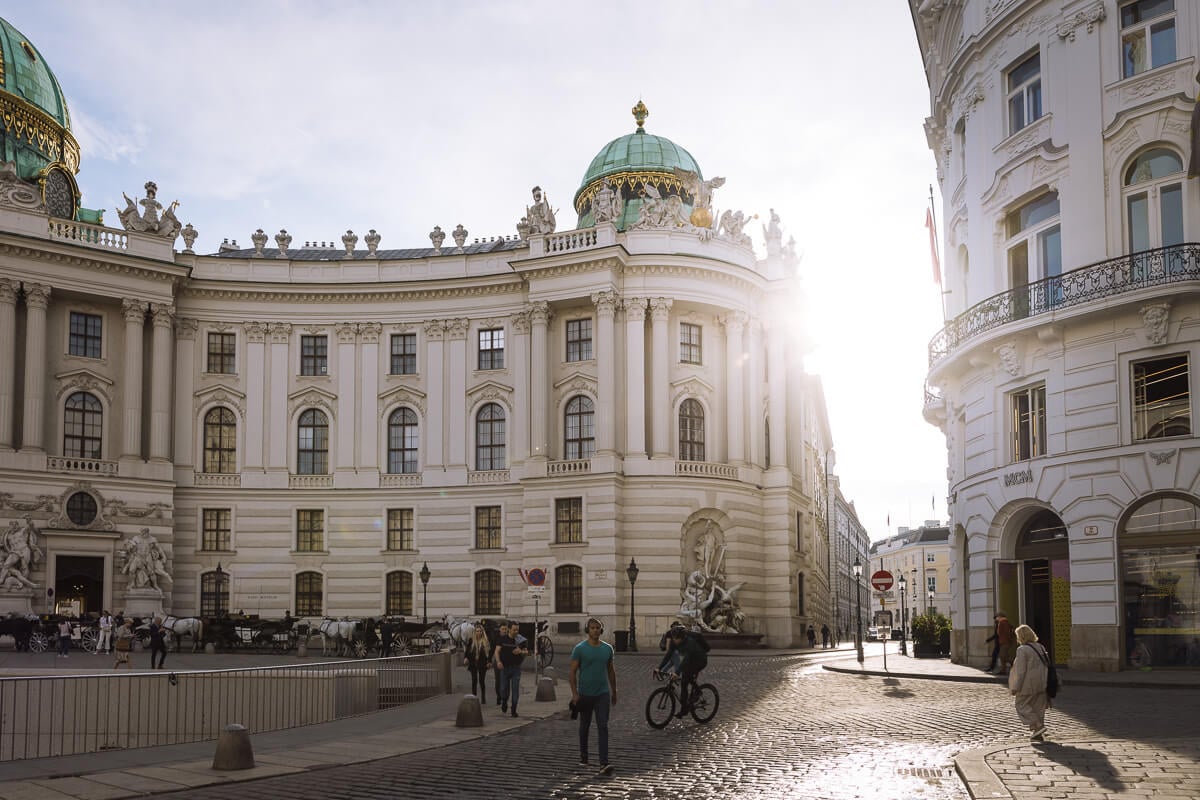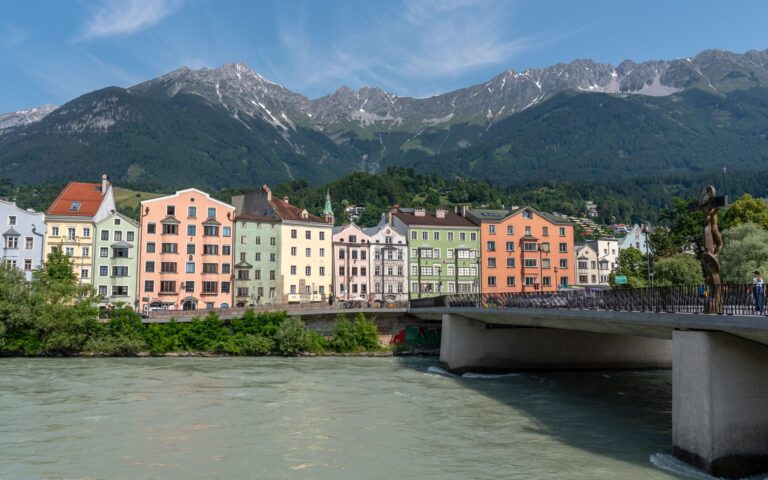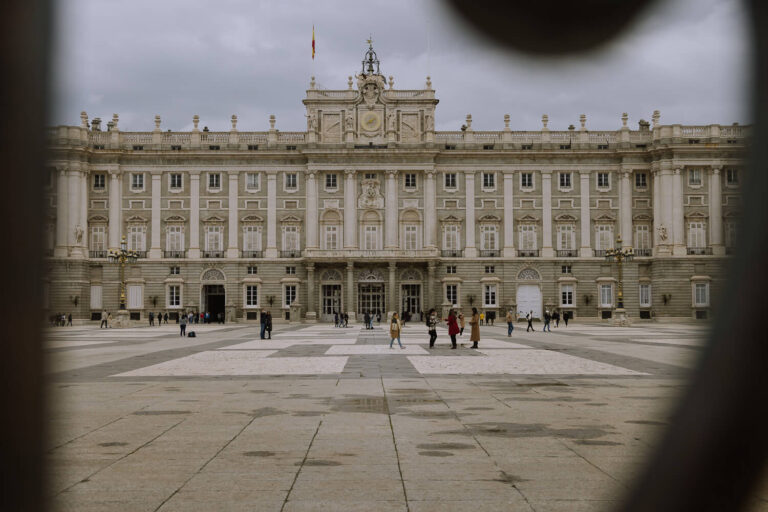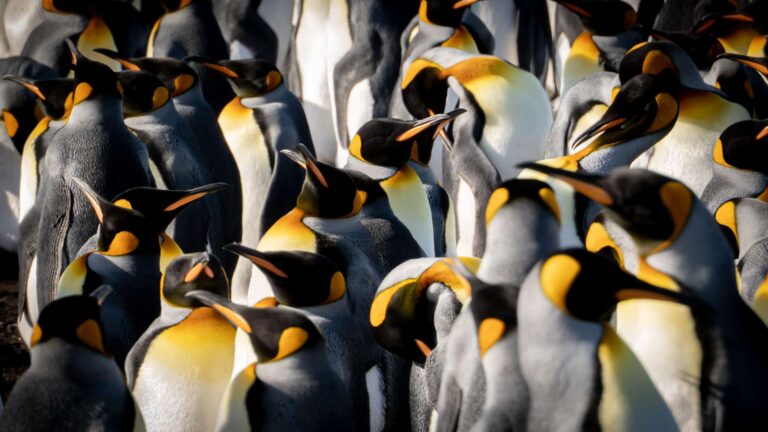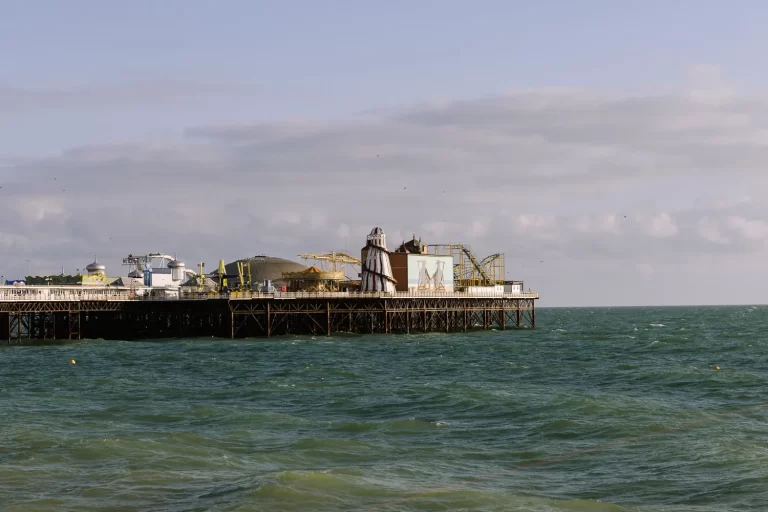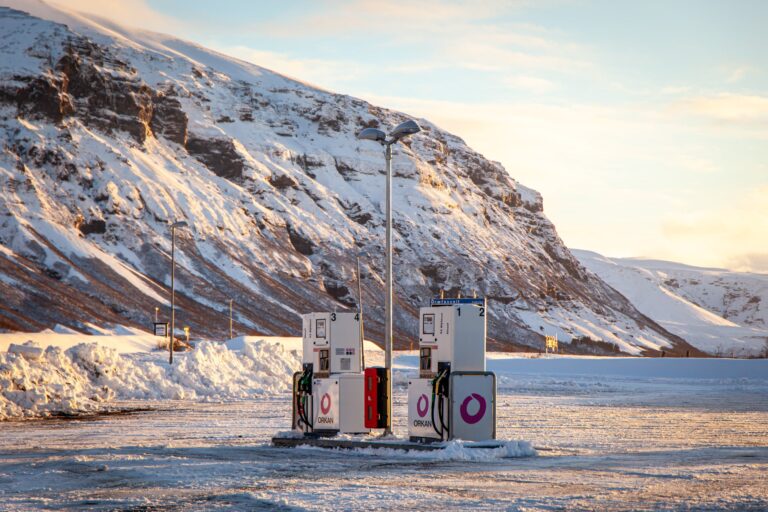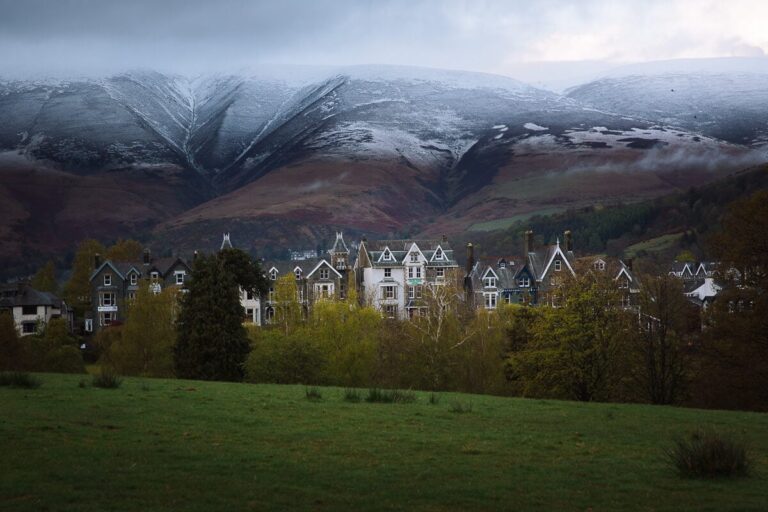18 Top Things To Do In Vienna In 3 Days | Anywhere We Roam
With world-class palaces and sumptuous museums, there are a host of grand things to do in Vienna. Get inspired with soaring music, a greedy art collection, and traditional cafes in one of the most stately cities in Europe.
Home to the Habsburg Royal family who ruled the Austro-Hungarian Empire and sat on the throne of the Holy Roman Empire for 300 years, Vienna wears its historic wealth and grandeur on its sleeve.
Few places in Europe can compete with Vienna’s imposing array of state apartments, royal collections, grandmasters, gothic architecture, and baroque halls.
But there’s more to do in Vienna than exquisite galleries and ostentatious palaces. Artists such as Mozart, Beethoven and Strauss all spent time here and music still radiates from its soul.
There are old school neighbourhoods packed with grand boulevards and traditional coffee houses where philosophical ramblings shaped the modern psyche. Trendy areas with colourful street art, and a canal-side urban space with pop-up bars and a vibe that draws cool young things.
While you could see many of the best things to do in two days, we suggest 3 days in Vienna. That way you can visit more than a couple of museums and get under the skin of Europe’s capital of regal cool.
Booking your trip via the links on this page (or on our book page) will earn us a small commission, at no extra cost to you. Thanks for your support – Paul & Mark.

ABOUT THIS GUIDE
WHAT TO DO IN VIENNA ON A 3-DAY ITINERARY
This guide contains the highlights not to be missed on a visit to Vienna along with helpful tips and our suggested itinerary for 3 days.
1 – HOFBURG PALACE
The Habsburgs, also known as the House of Austria, were one of the great Royal families of Europe and for 300 years they sat on the throne of the Holy Roman Empire. Their home was the sprawling Hofburg Palace, a series of interconnected buildings forming one of the unmissable things to do in Vienna.
Originally built for defensive purposes in 1279, it was gradually transformed into an ostentatious imperial palace. Today, grand façades conceal the home of the Austrian president and a wealth of artifacts acquired over centuries.

HIGHLIGHTS AT THE HOFBURG PALACE
Sisi Museum // Located in the Imperial Apartments, the Sisi Museum contains personal objects of Empress Elisabeth in lavishly appointed rooms. The ticket includes access to the Imperial Apartments and the Imperial Silver Collection – book a guided tour.
Spanish Riding School // See the beautiful white Lipizzaner stallions perform classic equestrian movements in perfect sync with music in front of the Baroque palace – book a guided tour.
Imperial Treasury Museum // Witness some of the most important treasures in the world at the Imperial Treasury Museum. The highlight is the Imperial Crown of the Holy Roman Empire – book skip-the-line tickets.
Austrian National Library // The single most impressive attraction at the Hofburg Palace is the Austrian National Library which contains over 200,000 historic books. More about this next.
TOP TIP | HOFBURG WALKING TOUR
The Hofburg Palace occupies much of central Vienna. One of the best ways to get your bearings is on a walking tour of the city which includes several sites in the palace complex.
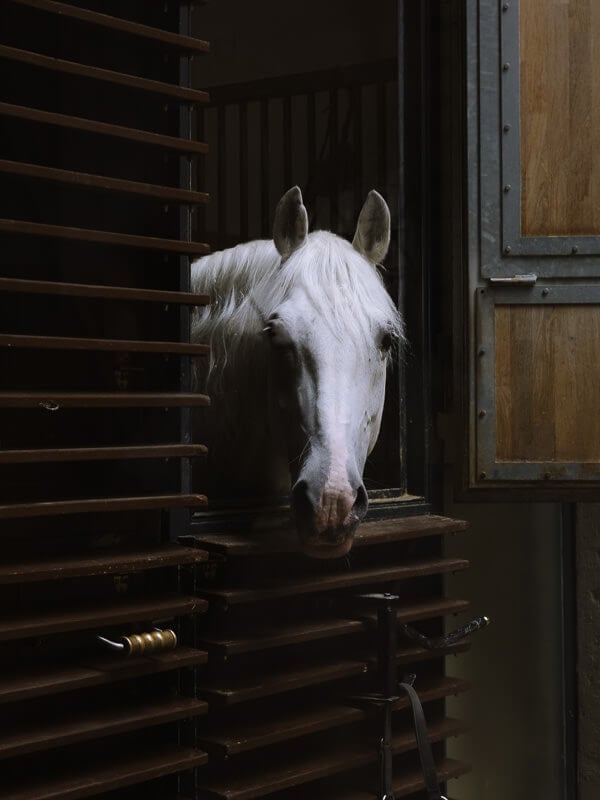


2 – AUSTRIAN NATIONAL LIBRARY (ÖSTERREICHISCHE NATIONALBIBLIOTHEK)
Rooms don’t get any more impressive than the Prunksaal, the Grand Hall in the centre of the Austrian National Library. Century-old wooden bookcases hold over 200,000 medieval leather-bound books which reach up towards the 20-meter-high ceiling.
The domed roof, supported by towering pillars with intricately carved marble reliefs, is rich in dramatic frescoes – a bold display of imperial flair.
Apart from the majestic display of Habsburg wealth and power, it’s also the largest library in Austria. Unfortunately, the books are out of bounds, but it’s still a wonderful thing to do in Vienna.
DETAILS | AUSTRIAN NATIONAL LIBRARY
hours – 10 AM to 6 PM (open until 9 PM Thursdays); closed Monday | cost – €10 | tickets – purchase online or in-person | location – the State Hall is on Josefsplatz



3 – STEPHANDSOM (ST STEPHEN’S CATHEDRAL)
The Innere Stadt is the old centre of Vienna. Surrounded by the Ringstraße which marks the route of the former city walls, it is here you’ll find the heart and soul of the city as well as many of the best sights.
Top of the list and bang in the centre is Stephandsom – St Stephen’s Cathedral. Soaring above the rest of the inner city its steeple stands above a colourful tiled roof.
Inside its dark and gloomy and distinctly Gothic with narrow columns extenuating its height.
In 2021 the ‘Ladder to Heaven’ modern art installation was added to the cathedral. Lit up every night and representing the ascent and descent between heaven and earth, it adds a cool modern contrast to an old medieval building.


STEPHANDSOM VISITOR INFORMATION
Exploring the main church is free, but access to the South Tower is €5.50 and the North Tower is €6 (9 AM to 5:15 PM). The catacombs can only be visited on a tour.
An all-inclusive ticket costs €20 and includes an audio guide, the catacombs, the West Gallery, and both towers.
TOP EXPERIENCE | STEPHANDSOM CLASSIC CONCERTS
A great way to visit the cathedral is by attending a classical concert held in the gothic space. The natural acoustics make it a memorable experience in Vienna.


4 – INNERE STADT
It’s worth spending a few hours exploring the streets of the Innere Stadt that surround the church. There are majestic façades, narrow passageways, cute and quirky shops, and numerous hidden churches to seek out.
Pop into Palais Kinsky, a magnificent baroque palace with a stunning entrance hall and grand staircase.
The Ferstel Passage, a quaint old shopping arcade is also well worth exploring. Some of the highlights are Xocolat, an excellent chocolate shop; Caffe Couture, an excellent coffee roaster; and Beaulieu, a fine French restaurant.
All the locations are marked on our map below.



5 – COFFEE CULTURE
The Viennese take their coffee houses seriously. Some are tucked into narrow alleyways while others stand proud on the corners of sweeping boulevards. If you are spending 2 or 3 days in Vienna, you’ll have plenty of time to try a few.
Café Central – Housed in an imposing building the interior of Cafe Central is reminiscent of a Turkish palace with a grand arched ceiling. A pianist plays from 3.30 pm to 8.30 pm daily (except Tuesdays). Café Central is a very popular thing to do in Vienna, so queues can be long. Consider booking ahead.
Café Leopold Hawelka – Our favourite coffeehouse in Vienna, Leopold Hawelka is an old-school cafe just south of Stephandsom. With a choice of bistro tables or old striped cushioned booths, it has all the atmosphere you want from a Viennese cafe.
Kleines Café – This tiny coffeehouse on a lovely little hidden square with cobbled stones and an old fountain is the perfect place to soak up the Viennese lifestyle.



6 – SACHERTORTE, STRUDEL AND KAISERSCHMARRN
Leading the sweet offerings in Vienna is Sachertorte. A dense chocolate cake with layers interrupted by sweet apricot jam; finished in a chocolate glaze. It’s the dessert staple in most Vienne establishments, but the original is claimed by Café Sacher.
Another great dessert to try is Kaiserschmarrn. This sweet fluffy pancake with rum-soaked raisins is ripped apart, caramelized, and served with powdered sugar and a fruit preserve. It’s delicious and the best we had was at Demel.
We wouldn’t exactly say we were captivated by Apple Strudel as most visitors to Vienna are, however, the punters at Café Central seemed pretty happy with their decision.


7 – SCHLOSS BELVEDERE
The Schloss Belvedere is one of the world’s finest baroque palaces and a must-see on a 2- or 3-day Vienna itinerary.
There are three museums to choose from inside the ornate building, but we highly recommend at least visiting the Upper Belvedere. Housed in the main palace in a mix of marble, frescoed and stuccoed rooms, it’s an important collection of Habsburg art.
The highlight is the first floor which focuses on Viennese art from 1880-1914, including the largest collection of Gustav Klimt pieces in the world. There are also the expressive busts of Franz Xaver Messerschmidt.


Only slightly less overwhelming are the Impressionists, Romantics, and Realists that hold sway on the floor above. With opulent rooms, lovely gardens, sweeping city views, and informative captions, it’s a great way to explore the history of art progression in an inspiring setting.
The two other museums are the Lower Belvedere & Belvedere 21. Both have temporary exhibitions, so it’s worth seeing what’s on before you buy tickets.
VISITOR TIP
VISITING THE BELVEDERE MUSEUMS
Upper Belvedere has masterpieces by Klimt, Rodin and van Gogh plus a history of the building; the Lower Belvedere features treasures from the Middle Ages and art from all periods; Belvedere 21 has contemporary art and film.
For single galleries, book here for the best prices. If you want to see more than one gallery, book on their official website for multi-ticket discounts.



8 – KARLSKIRCHE (ST CHARLES CHURCH)
Built in the 18th century after the great plague had swept through Europe, Karlskirche is the finest Baroque church in Vienna. Its copper domed roof is flanked on either side by towering columns resembling Trajan’s in Rome and supported by what looks like a Greek temple.
Unencumbered by surrounding buildings and standing on the edge of flower-filled Resselpark, it’s one of the great photo opportunities in Vienna.
The inside of the church (€8) is impressive also with frescoed ceilings, a spiral staircase, a small treasury, and views over the city.
Karlskirche is recognized as one of the most outstanding concert venues in Vienna. One of the best ways to get a peek inside is by attending the Mozart & Vivaldi concerts performed on period instruments by the famous Orchestra 1756.
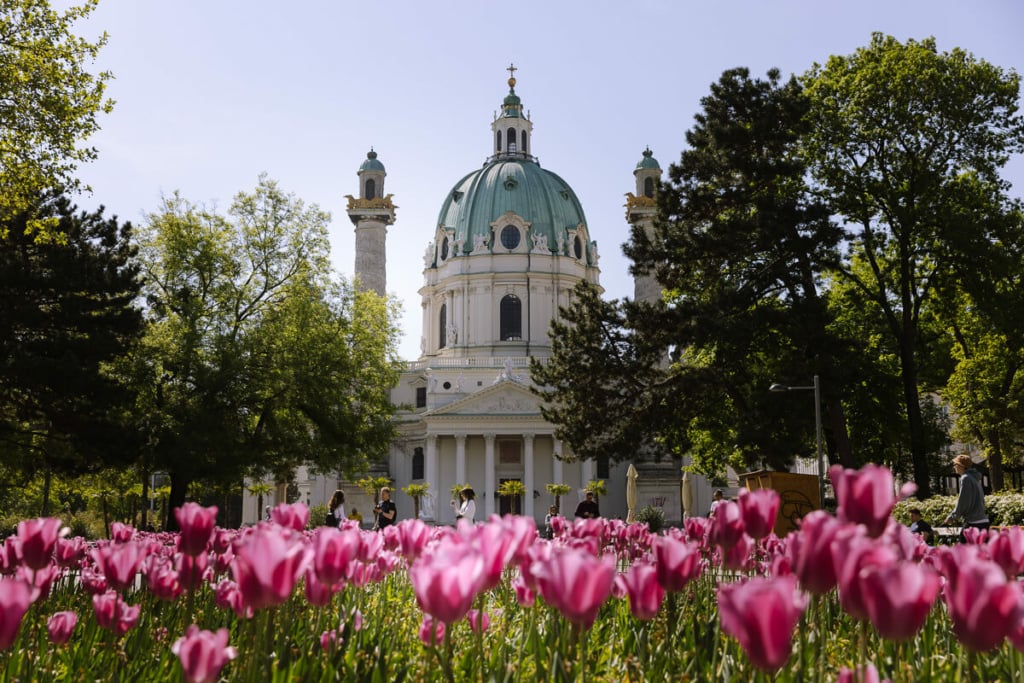
9 – NASCHMARKT
Consisting of about 120 stalls, the Vienna Naschmarkt is a colourful culinary journey through the flavours of Europe and the Middle East.
It ranges from traditional Austrian sausages and cheeses to Italian pasta and Turkish dried fruit and baklava.
There are coffee shops and wine shops, places to buy clothes and rugs, and plenty of interesting little cafes for lunch. Sit in sheepskin-covered chairs at Neni am Naschmarkt and enjoy Israeli-influenced creations, or dine amongst milliner artifacts at Nomade Moderne.
Saturday is the busiest time to visit with more of the stalls open and a massive flea market underway. Progress is slower, but the atmosphere is buzzing.
DETAILS | NASCHMARKT VIENNA
hours – 6 am to 9 pm Monday to Friday; 6 am to 6 pm Saturday | location – between Karlsplatz and Kettenbrückengasse



10 – LEOPOLD MUSEUM
There are few cities with more museums than Vienna, and there are only so many you can visit in 2 or 3 days, but we recommend including the Leopold Museum.
Dedicated to Secession Art (for which Viennese artists were the most influential), it tracks the historic break between the conservative art of the 19th century and the avant-garde artists of the 20th.
Gustav Klimt led the group, but the museum delves deeper into his follower’s works such as Egon Schiele and Richard Gerstl. Spread over two floors it’s unsettling, provocative, entirely enthralling, and utterly Viennese.
DETAILS | LEOPOLD MUSEUM
hours – 10 am to 6 pm, closed Tuesday | tickets – book skip-the-line tickets in advance.



11 – ALBERTINA MUSEUM
Whereas the Leopold Museum gives a unique insight into Viennese Art the Albertina Museum is a whirlwind tour of European art from Monet to Picasso.
Once a remarkable private collection but gifted to the state, it is a journey through impressionism, pointillism, and cubism to early modern.
Be engrossed by the brushstrokes of Monet, Picasso, Kandinsky, Klee, Miro, and Chagall.
Temporary exhibitions are housed on the top and bottom floor. On our visit, we were lucky to be treated to a Dialogue with Edvard Munch, which displayed his work and those of artists heavily influenced by him, including Francis Bacon & Tracey Emin.
DETAILS | ALBERTINA MUSEUM
hours – 10 am to 6 pm daily, open until 10 pm Wednesday and Friday | tickets – book skip-the-line tickets in advance.


12 – KUNSTHISTORISCHES MUSEUM
Our final museum recommendation is the Kunsthistorisches (KHM) Museum, the granddaddy of museums in Vienna. It houses many of the treasures of the Habsburgs and is so immense you could spend a whole day here. There are four good reasons to visit.
Firstly, if you are interested in ancient history there is a plethora of Greek, Roman and Assyrian sculptures, mosaics, and vases, all beautifully lit in soft atmospheric light.
Secondly, the wide collection of strange curiosities picked up by the Habsburg Emperors over the centuries could keep you intrigued for hours. Thirdly, the volume of works by grandmasters from the 16th to 18th centuries including Rubens, Bruegel, van Dyck, Titian, and Tintoretto is immense.

But one of the best reasons to visit is the magnificent building they are housed in. Sweeping staircases, frescoed ceilings, grey marble pillars and massive doorways connect the rooms adorned with important art.
DETAILS | KUNSTHISTORISCHES
hours – 10 am to 6 pm Tuesday – Sunday; 10 am to 9 pm Thursday; closed Monday | tickets – book skip-the-line tickets in advance



13 – LUNCH AT PALMENHAUS
Palmenhaus – a massive greenhouse restaurant – is near many of the museums and a great place to rest the weary legs after hours of strolling around. Dine inside with towering palms all around you or enjoy the outdoor terrace overlooking the park.
It’s a great place to grab a coffee or a glass of wine. They also had some pretty decent vegetarian options, something that wasn’t too easy to find in many places in Vienna.
14 – LEOPOLDSTADT & CANAL
If the Innere Stadt is home to old Vienna then Leopoldstadt, just across the canal, is the younger cooler neighbour. There are three good areas to explore.
01 // The Karmeliterviertel is a trendy urban neighbourhood with a laidback and unpretentious vibe. Its main market (Karmerlitermarkt) has a variety of food stalls during the week but becomes a vibrant farmers’ market on Saturday.
02 // Down by the canal, modern street art brightens up the walls, while on sunny days locals flock to the bars and barges lining the waterfront. You can hire a bike, go for a swim in a pool barge or simply grab a drink and watch the world go by.
03 // Finally, it is also home to Prater Park, the city’s green playground containing Wurstelprater – a massive funfair. There are rides and thrills aplenty, but for connoisseurs of old films, it is best known for the large Ferris wheel (Wiener Riesenrad) that is featured in the film The Third Man starring Orson Wells.


15 – DINNER IN A BEISL
To absorb old school Vienna one of the best things to do is have a meal in a beisl. These traditional bistros are pared-back, down-to-earth establishments that have been serving the same fare for centuries.
Standard favourites are Wiener Schnitzel; slow-cooked beef goulash with dumplings; and Tafelspitz – Viennese-style boiled beef. Wash it all down with wine or locally brewed beer and end with a homemade strudel.
Two of the best are Griechenbeisl which has been serving food in atmospheric wood-paneled rooms since 1447 and Glacis Beisl which has a wonderful outdoor courtyard lit by low-hanging lights. The odd vegetarian dish has crept onto the menu – but don’t expect much choice if you’re not a meat eater.


16 – RATHAUS (VIENNA CITY HALL)
Towering over the Ringstraße is Vienna’s monumental Gothic town hall. Its richly adorned façade consists of multiple layers of arches rising to five spindly turrets. The design is intricate and beautifully symmetrical.
There’s a free tour to look inside the interior but simply staring up at the outside is one of the best things to do in Vienna.

17 – STAATSOPER & VIENNA BOYS CHOIR
In the 18th and 19th centuries, the wealth and power of the Habsburgs attracted many composers looking to make their living. Mozart, Beethoven, Strauss, and Brahms are just a few who spent time creating masterpieces in Vienna.
Befitting this heritage Vienna has some great music venues.
The Musikverein and its golden hall is home to the Vienna Philharmonic Orchestra, one of the finest in the world. The Vienna Boys Choir enthralls audiences on Sundays at the Imperial Court Chapel.
Finally, there are few grander or older opera houses than the Staatsoper. Seeing a performance is great, but even if you don’t want to stump up for the tickets it’s worth taking a tour. Not only is the main concert hall a magnificent sweep of red velvet and curved boxes but even the intermission rooms and staircases are stunning.



18 – SUNSET DRINKS AT DACHBODEN LOFT, 25HOURS HOTEL
The rooftop bar of the 25 Hours Hotel, Dachboden Loft, is one of the best places in Vienna for a relaxed cocktail to watch the sun set over the city. The cool bar with friendly staff has a chilled atmosphere, live music and well-priced cocktails. The indoor space has an urban-inspired design, and the outdoor terrace has excellent views over Hofburg Palace and Rathaus.
Some classic bar snacks are available to order, or you can grab a pizza from the restaurant on the ground floor and bring it up to the bar. A dance floor that looks like someone’s living room slowly swings into action as the evening progresses.


OTHER THINGS TO DO IN VIENNA
Our list of the 18 best things to do in Vienna is curated from our favourite experiences during our trips to the city. But here are a few more that you might fancy.
Schönbrunn Palace – Another grand Habsburg palace, Schonbrunn Palace is a 30-minute train journey from the centre of town. Complete with lavish baroque rooms and grand gardens on a mighty scale, Mozart played here in 1786.
Secession Building – If you are a fan of Klimt, pop in to see his Beethoven Frieze.
Heuriger – A heuriger is a tavern where local winemakers serve their own tipple. Most are located on the outskirts of the city, so they take a bit of getting to, but if you have the time, it’s a fun traditional night out. This guide has some great ideas.
MUMOK – If you feel you could see some more modern art, head to MUMOK. Focusing on the 20th and 21st centuries, it’s a mix of nouveau realism, pop art, cubism, and photorealism in an imposing grey granite block of a building.
HOW MANY DAYS TO SPEND IN VIENNA
We recommend staying 2 to 3 days in Vienna. In two days, you can explore the parks and grounds around the Hofburg Palace, amble the lanes of the Innere Stadt, wonder at Schloss Belvedere and try all sorts of traditional Austrian fare.
A third day allows time to visit more of Vienna’s museums, from art to armoury, apartments to antiquities. If you are a museum fanatic, you may even want to add a fourth day.


3 DAYS IN VIENNA ITINERARY
Here’s how to capture all the best things to do in Vienna in 3 days. We have broken them down to minimise the walking and break up the museums.
DAY 1
Amble the parks and grand buildings from the Rathaus to the Hofburg Palace, popping into one of its many museums including the Austrian National Library. Next, explore the Innere Stadt taking in Stephandsom Cathedral, the Kinsky Palace and Festrel Passage.
Along the way, soak up Austrian culture in one of its many fine coffee houses before ending the day with dinner at a beisl.
DAY 2
Start the day by admiring the grand façade of Schloss Belvedere before heading into the Oberes Belvedere to see the largest Klimt collection in the world. Next, stroll the university area making sure not to miss Karlskirche. Grab lunch at either the microbrewery of Salm Bach or at a stall in the Naschmarkt.
In the afternoon explore Leopoldstadt and the canal, stopping to see the street art, grabbing a drink on the riverbank, and pottering around cool shops. As the sun sets get a view of Vienna from above on either the Reisenrad or while sipping cocktails at Das Loft, before winding down to enjoy a night of music.
DAY 3
Spend the morning at either the Leopold, Albertina, or Kunsthistorisches Museums before decamping to the Palmenhaus for lunch. In the afternoon, take a tour of the Staatsoper and then recharge with sweet Kaiserschmarrn at Demel. As evening advances grab a seat on the terrace at Dachboden Loft, in the 25Hours Hotel.


MAP OF THINGS TO DO IN VIENNA
To help you plan your 3 days in Vienna, we have included all the main attractions on the below map, organised by day.
How to use this map / Click on the top left of the map to display the list of locations, then click on the locations to display further information. Click on the top right corner of the map to open a larger version in a new tab or the star to save to your Google Maps.
BEST TIME TO VISIT VIENNA
The best time to visit Vienna is in the shoulder seasons of May to June and September to October. The temperatures are warm but not too hot and the city is in full swing but not too crowded. Spring is particularly lovely as tulips and roses bring life and colour to the parks.
In June, two international music festivals (Vienna Jazz Festival and Donauinselfest) come to town and two world-class orchestras perform for free. In September Vienna Fashion Week arrives and in October there is the Long Night of the Museums and the Film Festival.
In July and August, the city gets busy with tourists, hotel prices rise and temperatures average 27 to 28°C. In the winter months, Vienna usually gets some snow with temperatures plunging to around zero, but December brings a wonderful Christmas spirit to the streets.
If you are flexible on what days to visit, try to avoid Tuesday as almost all the museums are closed.
VIENNA CITY CARD
The Vienna City Card gives you free access on the public transport (including the extensive tram and underground system) as well as discounts (about 20%) on almost all museums and sights. You can purchase it to cover 24 hours (€17), 48 hours (€25) or 72 hours (€29).


WHERE TO STAY IN VIENNA
Vienna has a flair for boutique hotels with style. Many are in refurbished grand old residences that incorporate chic design with traditional style. So, if you’re looking for a special weekend getaway, Vienna is a great choice. Here are some recommendations from us.
BOUTIQUE
BOUTIQUEHOTEL DAS TYROL
This modern design 4-star boutique hotel is decorated with original works by contemporary Viennese artists. It’s quirky, bright, good value and only a short walk or metro ride too all the main sights.
COOL STYLE
HOTEL MOTTO
In a grand building on the main shopping street of Vienna, this hotel has wonderfully stylish touches, a cool breakfast / cocktail bar and a sun-drenched rooftop terrace. With just a 12- minute walk to the Museumsquartier, it’s very convenient too.
REGAL
HOTEL IMPERIAL
The height of luxury and grandeur in the heart of Vienna, this grand dame hotel transports you back to the days of the Austro-Hungarian Empire. Built for the Prince of Württemberg, it offers a slice of royal life on the imposing Ringstraße Boulevard.


GETTING TO VIENNA
BY TRAIN
Vienna is located in the heart of Europe and trains journey from all over the continent arriving at Wien Hauptbahnof Station. The station is just a thirty-minute walk or 10-minute metro ride to the centre of the city.
Travelling by train is not only a fun way to arrive but good for the planet too. Check Austrian Rail for timetables and tickets.
BY AIR
Vienna International Airport welcomes flights from many airlines, but the most routes are provided by Austrian Airlines, the country’s flagship carrier. The airport is a 25-minute taxi ride (about €35-40) from the centre of town or a 15-minute train ride (leaving every thirty minutes) from Wien Hauptbahnof Station (about €5).
GETTING AROUND VIENNA
Vienna has an excellent public transport system. Six metro lines and an extensive tram network connect the different parts of the city. Having said that, many of the best things to do in Vienna are in a compact area around the Innerestadt. So, exploring on foot is often the best way to go.
Vienna travel Cards are available for 24 hours (€8); 48 hours (€14); or 72 hours (€17); or as part of the Vienna City Card. It provides free travel on all public transport in the core centre of Vienna. A single trip costs €2.40 so if your hotel is a little out of the centre it could easily save you money, especially if you are spending 3 days in Vienna.


This guide was produced in partnership with the Vienna Tourist Board.

MORE READING
As London-based travel bloggers, we’re often exploring cities close to home. Here are more of our guides from some of our favourite European cities.
The very best things to do in Bologna
A day in the medieval city of Siena
The best things to do in Antwerp, Belgium

